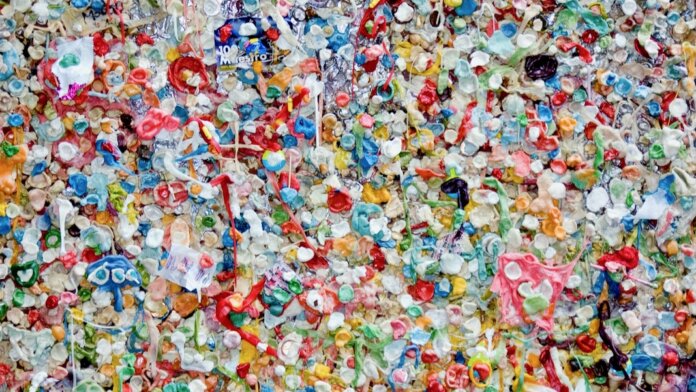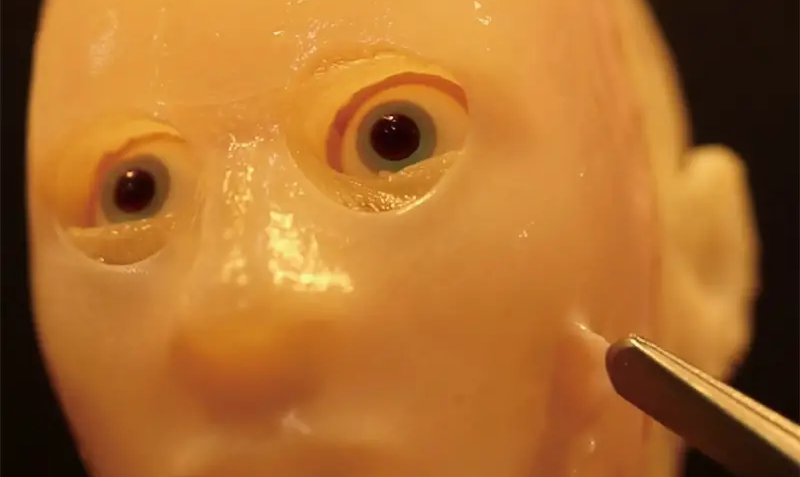The first time I heard about the Great Pacific Garbage Patch, I thought it was a bad joke.
This article was written by Shelly Fan and originally published by Singularity Hub.
My incredulity soon turned to horror when I realized it’s real. The garbage patch, also known as the Pacific trash vortex, is a massive collection of debris in the North Pacific Ocean. Although made up of all sorts of human-generated waste, the main components are tiny pieces of microplastic.
From straws to trash bags, we use an astonishing amount of plastic—which often ends up in delicate ocean (and other) ecosystems. According to the Center for Biological Diversity, a nonprofit organization for protecting endangered species based in Arizona, at current rates plastic is set to outweigh all fish in the ocean by 2050.
A new study wants to turn the tide with synthetic biology. By engineering genetic circuits into a bacterial “consortium,” the team reprogrammed two strains to not only destroy polluting plastics—but to also transform the toxic waste into useful biodegradable material. Environmentally friendly and versatile, these upcycled plastics can be used to manufacture foams, adhesives, or even nylon—all without further taxing the environment.
The strategy isn’t just limited to the polyethylene terephthalate (PET)—one of the most common types of plastics—tested in the study, said the authors. “The underlying concept and strategies are potentially applicable…to other types of plastics” and could begin lighting the way toward “a sustainable bioeconomy.”
A Natural Plastic Predator
Plastic helped build modern society. Made of molecular chains called polymers, it’s malleable, versatile, and economical to produce in mass. It’s also notoriously difficult to break down.
To Dr. James Collins at MIT, synthetic biology can help us avoid turning the planet into a plastic wasteland. Pioneers in the engineering of synthetic gene circuits, study authors Collins and bioengineer Dr. Ting Lu at the University of Illinois Urbana-Champaign reasoned that genetically engineered bacteria could tackle the plastic conundrum head-on.
Although toxic to most organisms, plastic is an energy source to certain types of bacteria and fungi. Found in soil, the ocean, and even the guts of animals, these bacteria use specialized enzymes to break down different types of plastic. Enzymes are proteins that trigger or speed up biological processes—helping us digest a hefty meal, for example, or converting food into energy.
Unfortunately, these natural strains are sensitive to temperature and acidity and can often only digest plastic that’s already damaged by UV light or chemicals. Even strains that can break down PET plastics require weeks or months to do so, and can only handle small volumes.
A Synthetic Upgrade
Here’s where synthetic biology shines. Scientists in the field use genetic engineering to give organisms new abilities—for example, bacteria that can produce insulin—or even to build entirely new life forms never before seen in nature.
Prior to the recent study, scientists had mapped out multiple enzymes bacteria use to eat plastic. They tinkered with those metabolic processes by inserting or deleting genetic material—for example, to speed up their plastic-chomping abilities or to add enzymes that transform digested plastic waste into new, greener polymers.
This hasn’t been a smooth operation. Older methods work on single bacterial strains. But when faced with large amounts of debris, the bacteria are often overwhelmed. Broken down pieces of PET build up internally and inhibit the microbes’ metabolism—damaging their health.
Then there’s the technological hump. Upgrading plastic waste into usable products requires complex genetic engineering. To accomplish this, the team explained, they needed to build “advanced designer pathways” linking multiple enzymes to produce the final product. Like directing a genetic symphony, this synthetic upgrade demanded fine-tuning throughout the bacteria’s inner cellular workings—a difficult enough feat when manipulating a single strain.
Still, they wondered, if one strain can’t efficiently do the job. What about teamwork?
A Division of Labor
In nature, we see that multispecies microbial communities work together in plastic biodegradation, said the team. So they expanded the bacterial workforce from one synthetic strain to a simple ecosystem of two.
At the heart of this ecosystem is a division of labor. PET breaks down into two main components—terephthalic acid and ethylene glycol—with massively different properties. Mixed food sources are the microbes’ Achilles heel: They’re awful metabolic multitaskers, with pathways for degrading one molecule often suppressing those of another.
Here, the team built their dynamic duo from two strains of Pseudomonas putida, a Cheetos-shaped bacteria often found in polluted water and soil. One strain had a taste for terephthalic acid, the other for ethylene glycol. This particular type of bacteria is a darling in biodegradation research, as it naturally digests aromatic molecules such as styrene, which is widely used to make plastics and rubber. It’s also easy to genetically manipulate and can adapt to new metabolic pathways, making the strain a perfect starting point.
In each natural strain, the team deleted genes involved in metabolizing either terephthalic acid or ethylene glycol and added genes that allowed them to consume the other component.
The result was a bacterial tag-team. Each highly efficient at eating their respective plastic waste product, they also collaborated well when cultured together—neither strain inhibited the other’s diet. Both stuck to their own food source and happily thrived alongside each other.
As a comparison, the team also engineered a multitasker strain that eats both plastic byproducts. Compared to the specialized tag-team, the single strain took far longer to digest the waste both individually and when given as a mix.
Trash to Treasure
Now that they had their bacteria fully digesting plastic waste, the team next integrated several genes to transform it into new materials.
First, they rewired both strains to produce a highly promising biodegradable polymer. The strategy worked exceptionally well. In one test lasting over four days, the two strains pumped out the desired polymer at a far higher rate than the single strain—producing up to 92 percent more of it as a result.
In another test, the system efficiently produced a chemical often used to synthesize plastic and nylon—one that’s notoriously difficult for single strains to upcycle using plastic waste. All it took was a few genetic swaps, and the division of labor readily generated the target chemical.
The idea of upcycling plastic waste isn’t new. In the past, scientists have used heat, force, and chemicals to break down waste and rebuild it into usable material. Bioconversion offers a new, cleaner, more efficient path. All reactions take place inside the microbes, linking waste degradation directly to the desired product in one step. Microbes are also easy to culture in industrial-sized vats, making it possible to scale plastic upcycling.
The study advances this vision of bio-upcycling by making the process more efficient.
A key insight of the study, the team said, is that a division of labor is especially important for fine-tuning the PET upcycling process. As the tools further develop, they believe synthetic bacterial ecosystems could be used to tackle other plastic pollutants and waste too.





